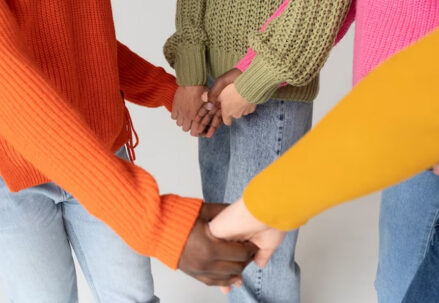Colors have always been powerful symbols in human culture, representing a wide range of emotions, concepts, and states of being. One intriguing aspect of this colorful lexicon is understanding what color represents chaos. This article delves into the depths of this question, exploring various hues and shades that have historically, culturally, and artistically been associated with chaos.
The Red of Rebellion and Turmoil
When considering the representation of chaos in color, one of the hues that stands out prominently is red. Red is a color that has a long history of association with chaos and disruption. It is often linked to fire and blood, making it a symbol of danger, passion, and disorder. Across numerous cultures, red is synonymous with revolution, intense emotion, and dramatic upheavals, all of which are central elements in chaotic situations. Let’s delve deeper into the historical and cultural perspectives of red as a symbol of chaos.
- Ancient Warfare: Red banners unfurled on the battlefield, signifying the bloodshed and chaos of battle. The sight of red on the battlefield was a stark reminder of the turmoil and violence that ensued during times of conflict;
- Political Movements: Red flags have been historically used to represent radical change and disruption. Political movements and revolutions often adopted red as a symbol of their rebellion against the established order, emphasizing the chaotic nature of such upheavals.
The Black Abyss of the Unknown
Black is another color that frequently finds itself associated with chaos. It represents the unknown, the void, and the absence of order. In literature and art, black often symbolizes the darkness within or the unseen forces that disrupt the natural order. Let’s explore the cultural references that make black a fitting representation of chaos.
- Black Holes in Space: Black holes, known for their immense gravitational pull and the mysterious nature of what lies within, symbolize the unpredictability and mystery of the universe. Their existence and behavior are still not fully understood, adding to the sense of chaos they represent;
- Gothic Literature: In Gothic literature, black is frequently used to depict despair and chaotic emotions. The dark and foreboding settings, often filled with supernatural elements, create an atmosphere of disarray and turmoil.
The Unpredictable Nature of Multicolors
While red and black are strong contenders in representing chaos individually, the combination of multicolored patterns should not be underestimated. These patterns, with their unpredictable and clashing colors, effectively convey a sense of disarray and confusion. Let’s explore how multicolored patterns are used in art and culture to represent chaos.
- Abstract Art: Abstract artists often juxtapose contrasting colors in their work to evoke a sense of disarray and chaos. The unpredictable combinations of colors can leave viewers feeling disoriented and unsure, reflecting the nature of chaos itself;
- Carnival Costumes: Bright and clashing colors are commonly used in carnival costumes to symbolize wild festivities and unrestrained behavior. The riot of colors and patterns during festivals represents a temporary departure from order and convention, embracing chaos in a celebratory manner.
The Psychology Behind the Chaos

Understanding what color represents chaos also involves delving into color psychology. This field of study examines how different colors affect human behavior and emotions. Let’s explore the psychological impact of red, black, and multicolored patterns in the context of chaos.
| Color | Impact on Emotions and Psychology | Explanation and Context |
| Red | Stimulates strong emotions | Red evokes intense emotions and is often linked with chaos. It can incite feelings of anger, excitement, and urgency, amplifying turmoil. |
| Creates feelings of urgency and alertness | The vibrant nature of red captures attention, making individuals feel alert and on edge, reinforcing its association with chaotic scenarios. | |
| Black | Can evoke feelings of fear and anxiety | Black is connected with the unknown and darkness, instilling fear and anxiety, and tapping into our primal fears, accentuating chaos. |
| Used to create an atmosphere of mystery and suspense | In literature and film, black sets the stage for mystery and suspense, heightening the chaotic elements of the narrative. | |
| Multicolors | Can lead to sensory overload | Clashing multicolored patterns can overwhelm the senses, leading to disorientation and discomfort, reflecting real-life chaos experiences. |
| Used in settings meant to disorient or overwhelm | Designers and artists use multicolors to create disorienting or overwhelming environments, effectively conveying visual and experiential chaos. |
Colorful Representations in Popular Culture
Popular culture is rich with examples demonstrating how colors like red, black, and multicolors are employed to signify chaos and turmoil. These colors serve as powerful storytelling tools across various mediums, including movies, TV shows, comic books, and graphic novels.
Movies and TV Shows
In the realm of movies and TV shows, colors are used strategically to evoke specific emotions and themes:
- Red: This color is frequently utilized in scenes depicting battle or intense drama. Its vividness and intensity make it an ideal choice for conveying urgency and high stakes;
- Black: Black is often the color of choice for villains or representations of chaotic entities. Its association with darkness and the unknown makes it a perfect fit for characters or situations embodying chaos and danger;
- Multicolors: Multicolored visuals are used in sequences meant to disorient the viewer or represent psychedelic experiences. These colors can create a sense of disarray and confusion, effectively conveying a chaotic atmosphere.
Comic Books and Graphic Novels
Comic books and graphic novels, renowned for their vibrant visual storytelling, also make extensive use of colors:
- Red: In this medium, red often symbolizes anger or chaotic action. Its boldness stands out on the page, drawing attention to scenes of conflict or emotional intensity;
- Black: Black backgrounds are typical in scenes with high tension or fear, providing a stark contrast to other elements and heightening the sense of danger or uncertainty;
- Multicolors: These are used to represent otherworldly dimensions or situations that are beyond the ordinary, often in scenes depicting chaos or disorder in a fantastical context.
The Role of Color in Artistic Chaos
Artists have long recognized the power of color in expressing chaos and disorder. The use of color in artwork can convey a range of emotions and themes, from turmoil to existential angst.
- Red: In paintings, red is often chosen to depict scenes of war or emotional turmoil. The color’s intensity can evoke feelings of aggression, passion, and disruption, making it a powerful tool for artists;
- Black: Black is employed in abstract art to represent concepts like the void or existential angst. It can be used to create a sense of depth or emptiness, often contributing to a narrative of turmoil or existential crisis;
- Multicolors: Multicolors are prominently featured in modern art to express the chaotic nature of contemporary life. These colors, when used together in unconventional or clashing ways, can depict the complexities and disarray inherent in modern existence.
Through these various forms of popular culture and art, it’s clear that color plays a crucial role in the representation of chaos. Each color, whether it’s the intensity of red, the darkness of black, or the disarray of multicolors, brings its unique contribution to the depiction of chaos, enriching the narrative and enhancing the audience’s experience.
Conclusion
Exploring what color represents chaos reveals a vibrant spectrum of meanings and interpretations. From the fiery reds of passion and turmoil to the deep blacks of the unknown, colors offer a unique lens through which we can view and understand the concept of chaos. As we continue to navigate a world filled with color, it becomes clear that the answer to what color represents chaos is as diverse and dynamic as the colors themselves.
FAQ
Q1: Can different cultures have different colors representing chaos?
A: Absolutely. Cultural perceptions of color can vary significantly, and thus, what color represents chaos can differ from one culture to another.
Q2: How does color symbolism in chaos change over time?
A: As societies and their associations with colors evolve, so does the symbolism attached to these colors in the context of chaos.
Q2: Are there any colors that universally represent chaos?
A: While red and black are commonly associated with chaos across many cultures, there is no universally accepted color for chaos due to varying cultural interpretations.
Q4: How do artists choose colors to represent chaos in their work?
A: Artists often select colors based on their cultural significance, psychological impact, and personal interpretation of chaos.
Q5: Can the meaning of a color change within the same culture?
A: Yes, the symbolism of colors can shift within the same culture over time, influenced by historical events, societal changes, and evolving cultural narratives.




